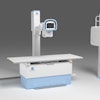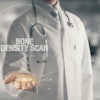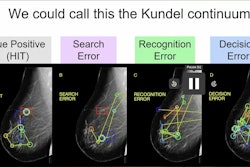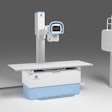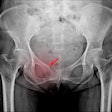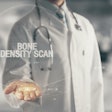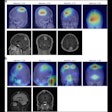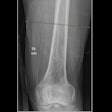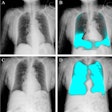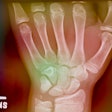Enhancing peripheral visual perception through training improved lesion detection skills for undergraduate medical imaging students, according to a recent study.
The experiment involved comparing the performance of 30 participants before and after training under central or peripheral vision occlusion conditions and suggests that such training could play a role in medical image education, noted lead author Fenghong Wang, PhD, of South China University of Technology in Guangzhou, China, and colleagues.
“Traditional education has largely neglected the development of visual perception skills, which play a critical role in lesion detection,” the group wrote. The study was published July 6 in Scientific Reports.
Improving the accuracy of medical image diagnosis can enhance the quality of patient care, the authors noted. While central and peripheral vision have been recognized for their unique and essential roles in medical image diagnosis, with the two serving distinct yet complementary roles in lesion detection, few studies have explored whether perceptual training influences overall performance, they wrote.
To further explore the concept, the researchers conducted an experiment in which 30 undergraduate students first took a full vision pretest. The test consisted of 40 medical images, 20 tuberculosis cases, and 20 healthy cases. Participants clicked on a button to start the test, after which the system began timing, and medical images were displayed on a screen in a random sequence. If the participant determined the case to be positive, they clicked a red button; otherwise, they clicked a green button.
Next, participants were randomly divided into three groups of 10, each receiving a different training type. The training platform used eye-tracking technology to achieve real-time occlusion of specific visual fields. Specifically, GazePointer software was employed with a standard webcam for eye tracking and mouse control.
 (a) Mask for central vision occlusion. (b) Mask for peripheral vision occlusion. In both conditions, the central circular area had a radius of 400 pixels, feathered with a 100-pixel gradient. The black overlay was applied with 80% opacity.Scientific Reports
(a) Mask for central vision occlusion. (b) Mask for peripheral vision occlusion. In both conditions, the central circular area had a radius of 400 pixels, feathered with a 100-pixel gradient. The black overlay was applied with 80% opacity.Scientific Reports
Group 1 underwent five days of training, followed by two days of rest, and then five more days of peripheral vision training in which their central vision was occluded. Training involved learning 60 medical image cases (30 disease cases and 30 healthy cases, with correct answers given) per day.
Group 2 underwent the same regimen but with central vision training in which their peripheral vision was occluded. Group 3 took a full vision test with no vision occluded and served as the control group. Finally, on the first day after the training concluded, all 30 participants took a post-test, the same as the pretest.
According to the analysis, peripheral vision training significantly improved participants’ diagnostic mean accuracy (from 59.5% to 68%, p < 0.001), mean sensitivity (from 69% to 79.5%, p < 0.001), mean positive predictive value (from 65.6% to 82.9%, p < 0.001), and reduced mean task time (from 1163.4 seconds to 877.3 seconds, p < 0.001).
“Peripheral vision training significantly enhanced diagnostic accuracy, emphasizing the critical role of peripheral vision in improving diagnostic performance,” the group wrote.
In contrast, central vision training had no significant effects. Moreover, the researchers noted that training did not improve specificity and negative predictive value, metrics of negative diagnostic ability. Consequently, while enhancing peripheral vision perception may help reduce missed diagnoses, it may have a limited impact on reducing misdiagnosis, they wrote.
Nonetheless, peripheral training can enhance the effectiveness of medical image diagnosis and could play a role in the education of professionals in the field, they suggested.
“These findings underscored the critical role of peripheral vision in information retrieval and highlighted its potential as an effective training tool for lesion detection,” the group concluded.
The full study is available here.

